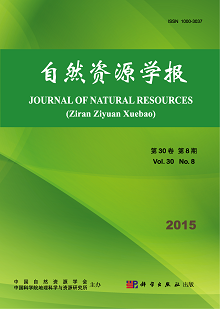
The detection and obtainment of ecological security hidden danger area plays an important role in the protection of urban ecological security. In this paper, based on the intelligent model and spatial analysis method, scenario simulation and analysis of spatial conflict and ecological security hidden danger were made for urban ecological land use in Guangzhou. Three scenarios with different proportion of ecological land were simulated. The research shows that: 1) spatial conflict areas mainly distribute in the urban fringe. In 15%, 30% and 50% scenarios, the urban fringe areas take 95.40%, 86.28% and 77.45% of the total area of spatial conflict respectively. Baiyun, Huadu, Tianhe and Panyu districts of Guangzhou are the major area of spatial conflict. With the increase of the percentage of ecological land, the proportion of spatial conflict in urban core area increase gradually. In 50% scenario, the urban ecological land in Guangzhou will face huge pressure of spatial conflict. 2) Areas with urban ecological security hidden danger mainly distribute in urban fringe area. In 50% scenario, the hidden danger area of urban fringe takes 74.13% of the hidden danger areas. Baiyun and Huadu districts are the most concentrated area of ecological security hidden dangers. While the areas with hidden dangers in the urban core area face greater ecological security pressure. The research results can provide advices for urban ecological security monitoring and pre-warning, and provide referential methods and tools for urban ecological protection.
In this study, we investigated the variation of flow-sediment relationship before and after comprehensive management and its response to the management in Yanwachuan Watershed of Loess Plateau gully region. Results showed that the runoff and sediment underwent a significant shift in 1997, and the human activities, which had positive influences on controlling soil erosion, were enhanced in the watershed after 1997. Thus, the whole period was divided into two sub-periods, the base period (1981-1997) and the management period (1998-2009). Whether at annual scale or single rainfall event scale, the flow-sediment relationship between runoff depth and sediment transport modulus varied significantly in the management period comparing with that in the base period. The sediment discharge at unit runoff depth in the management period was significantly lower than that in the base period. At single rainfall scale, the flow-sediment relationship tended to be stable when the flow discharge exceeded a critical value of 3 mm. When precipitation was less than 50 mm, rainfall intensity was lower than 4 mm/h or rainfall duration was longer than 3 h, the flow-sediment relationship in the management period showd significant variation. The comprehensive management of soil and water conservation had altered the flow-sediment relationship significantly at annual scale and single rainfall scale. The sediment discharge at unit runoff depth of individual rainfall under condition of medium-low precipitation, medium-low rainfall intensity or medium-long rainfall duration would be significantly decreased by the comprehensive control measures.